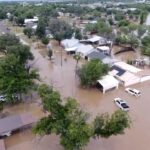As the owner of a strata property, your home investment is not just limited to your individual unit. Rather, it is a collective investment that is shared by all the owners in your building or complex. This means that any damage or loss suffered by the common areas or the building itself is also a shared responsibility of all the owners. This is where strata insurance brokers come into play. Strata insurance is a type of insurance that provides coverage for the common areas of a strata property, including the building itself, the shared facilities, and any liability that may arise from accidents or injuries within the premises.
Decoding strata insurance can be a complex and daunting task, but it is essential for all strata property owners to understand the coverage and protection provided by this insurance. In this blog post, we will delve into the intricacies of strata insurance and provide you with a comprehensive guide on how to protect your collective home investment.
Understanding strata insurance basics
As a strata owner, it is important to have a thorough understanding of strata insurance basics. Strata insurance is a type of insurance policy that covers common property and assets held in common by all strata owners within a building or complex. This includes coverage for the building’s structure, fixtures, common areas, and any shared facilities like a swimming pool, gym or car park. In case of an unforeseen event like fire, theft, or natural disasters, strata insurance provides protection to all owners, and helps in covering the repair or rebuild costs. It is essential to note that while the strata insurance policy covers common property, individual strata owners are responsible for obtaining their own insurance policies to cover their personal belongings and any improvements made to their unit. Understanding strata insurance basics is crucial to protecting your collective home investment, and ensuring that you are fully aware of your insurance requirements as a strata owner.
Defining strata property ownership
Defining strata property ownership is a crucial aspect of understanding strata insurance. In a strata property, an individual owner owns their unit while the common areas of the building are owned collectively by all the owners. Each unit owner has a share in the common property and is responsible for contributing to its maintenance and repair. This shared ownership structure creates unique insurance needs and responsibilities. Properly defining strata property ownership is essential for determining which elements of the building are covered by the strata insurance policy and which are the responsibility of individual unit owners. It is important to work with experienced insurance professionals who understand the nuances of strata ownership and can provide tailored insurance solutions to protect the collective home investment of all unit owners.
The role of the strata manager
The role of the strata manager is an integral part of managing strata insurance policies. They act as a liaison between the owners’ corporation and the insurance provider, ensuring that the policies and coverage meet the specific needs of the strata scheme. The strata manager is responsible for keeping up-to-date records of all insurance policies and ensuring that they are renewed on time. They will also handle any claims made by the owners’ corporation, liaising with the insurer and ensuring that the claims are processed efficiently and effectively. In addition, the strata manager will provide expert advice on risk management and help the owners’ corporation make informed decisions regarding their insurance needs. Overall, the role of the strata manager is crucial in protecting the collective home investment of the owners’ corporation and ensuring that they are adequately covered in the event of an insurable loss.
Common strata insurance claims
When it comes to strata insurance claims, there are a few common types that tend to occur within strata-titled properties. One of the most frequent claims is for water damage, which can be caused by a variety of reasons such as burst pipes, overflowing gutters, or leaking roofs. Another common type of claim is for damage caused by natural disasters such as storms, hail, and flooding. Additionally, claims for accidental damage to common property, such as damage to elevators, communal areas, or garages, are also common. Finally, claims for injuries sustained on common property, such as slips and falls, can also occur and should be covered by strata insurance policies. It is important for strata owners and managers to be aware of these common claims and ensure that they have adequate insurance coverage to protect their collective home investment.
Navigating the claims process
Navigating the claims process can be daunting, but it is crucial to ensure that your collective home investment is protected. To start, it is important to review your strata insurance policy and understand what is covered and what is not. When making a claim, be sure to report the incident as soon as possible to your strata manager or insurance broker. Provide all relevant information, such as photos and witness statements, to support your claim. Be prepared to work closely with your strata manager and insurance provider to provide any additional information they may require to process your claim. Remember, the claims process can take time, so it is important to be patient and keep communication open with all parties involved. By following these steps and being proactive, you can ensure that your claim is processed smoothly and that your collective home investment is protected for years to come.
Balancing coverage and cost
Balancing coverage and cost is a critical component of Strata Insurance. Strata owners must ensure that their property is adequately protected without overpaying for coverage that they may not need. One way to achieve this balance is to conduct a thorough risk assessment of the property. This assessment will identify the risks and vulnerabilities of the building, enabling the Strata to determine the appropriate level of coverage required to mitigate those risks. Cost-effective coverage can also be obtained by negotiating with insurers, bundling policies, and increasing deductibles. It is important to note that while reducing coverage may seem like a cost-saving measure, it can leave the Strata exposed to significant financial losses in the event of a claim. Therefore, it is essential to strike a balance between coverage and cost to ensure that the collective home investment is adequately protected.
Protecting against legal liability
Protecting against legal liability is an essential aspect of strata insurance. It is crucial to have appropriate coverage to protect your collective home investment against any legal claims that may arise. Legal liabilities can arise from various sources, including injuries sustained by visitors, damage to property caused by the strata unit, or disputes among unit owners. Strata insurance policies typically provide coverage for legal defense costs and damages awarded against the strata corporation, ensuring that the financial consequences of legal liability do not fall on individual unit owners. It is essential to review your strata insurance policy to ensure that it provides adequate protection against legal liabilities that may arise in your strata community. By taking the necessary steps to protect against legal liability, you can safeguard your collective home investment and promote peace of mind among unit owners.
Choosing the right insurance policy
Choosing the right insurance policy is a critical decision that can have a significant impact on the protection and financial stability of your collective home investment. When evaluating insurance policies, it’s essential to consider the coverage offered, as well as the cost of the policy. You will want to ensure that the policy you choose provides coverage for all possible risks and liabilities that may arise within your complex. Additionally, you should carefully review the policy’s limits and deductibles to ensure that you are adequately protected in the event of a claim. It’s also important to research the reputation and financial stability of the insurance company, as this can be an indication of their ability to pay claims. By taking the time to choose the right insurance policy, you can protect your collective home investment and avoid costly financial repercussions in the future.
Conclusion
Strata insurance is a complex topic that requires careful consideration and a thorough understanding of the associated risks. By working with a reputable insurance provider and taking the time to evaluate your specific needs, you can ensure that your collective home investment is adequately protected. It’s important to remember that the right insurance policy can provide peace of mind and financial security for both owners and renters in strata properties. With the knowledge and tools outlined in this post, you can confidently make informed decisions about your strata insurance coverage.















